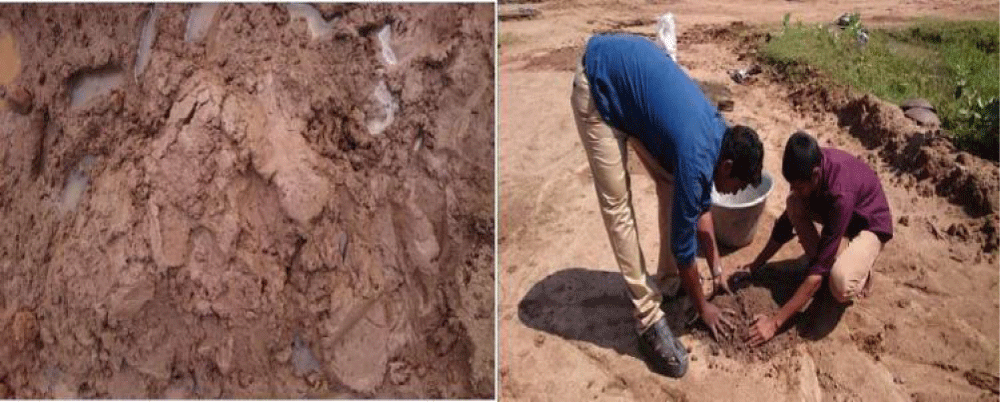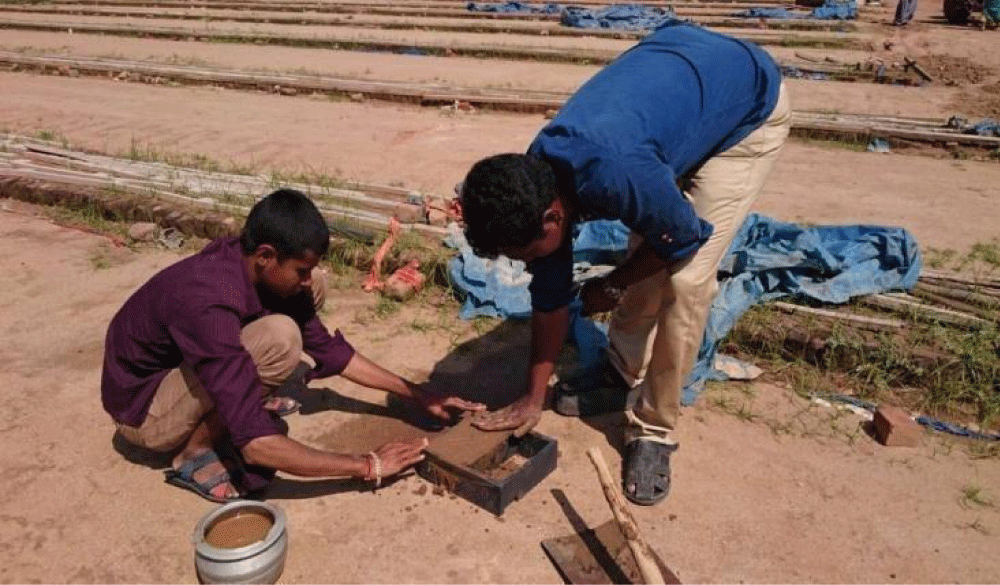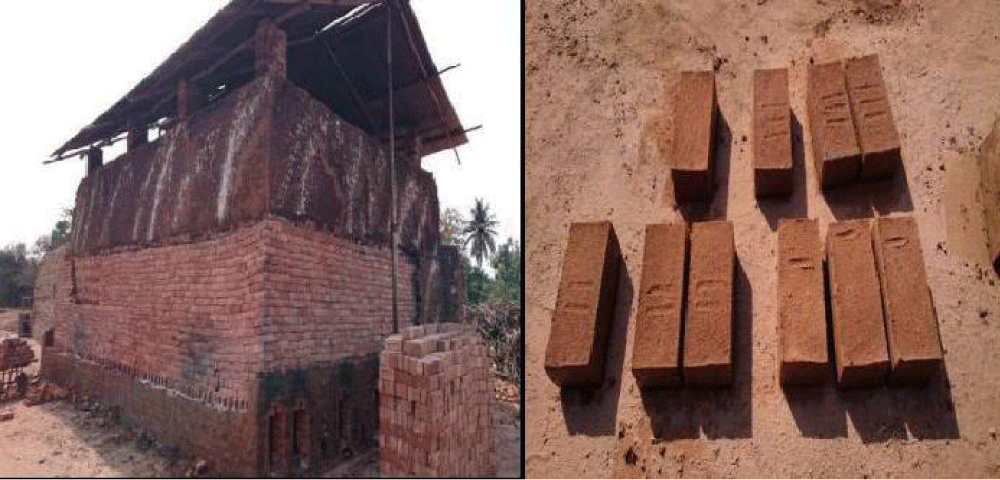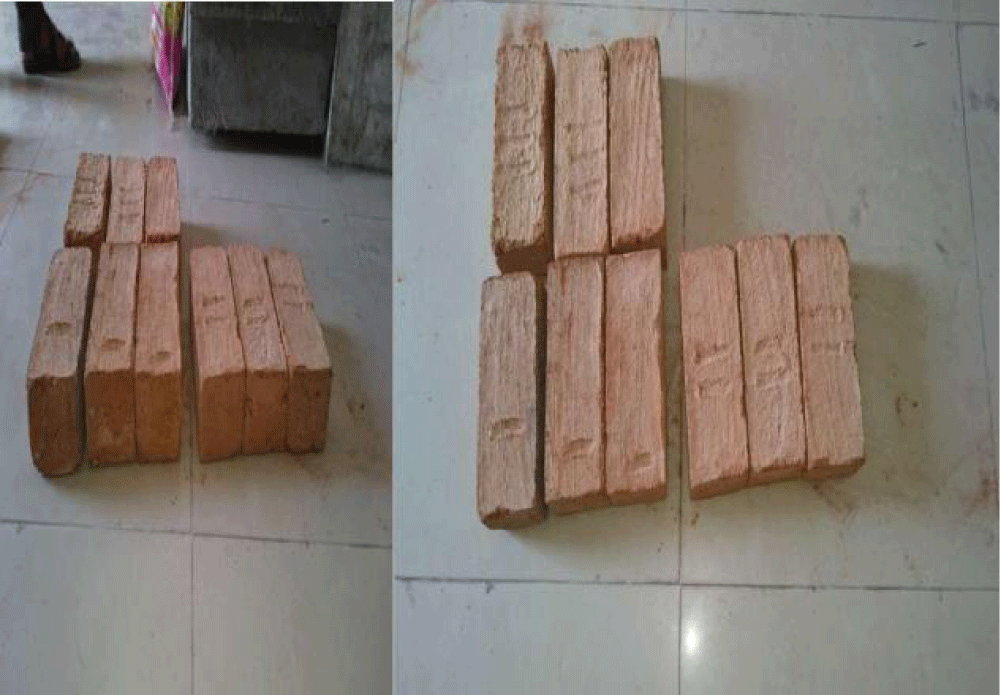Journal of Civil Engineering and Environmental Sciences
Experimental Study on the Effect of Sewage Sludge Waste in Bricks
Ananth Purushothaman*
Project Officer, Department of Ocean Engineering, (ICSR) IIT Madras, India
Cite this as
Purushothaman A. Experimental Study on the Effect of Sewage Sludge Waste in Bricks. J Civil Eng Environ Sci. 2024;10(2): 063-066. Available from: 10.17352/2455-488X.000086Copyright License
© 2024 Purushothaman A. This is an open-access article distributed under the terms of the Creative Commons Attribution License, which permits unrestricted use, distribution, and reproduction in any medium, provided the original author and source are credited.Introduction
In India like developing countries lot of industrial and domestic wastewater is produced in vast amounts so the treatment is a must at the treatment time producing a high amount of sewage sludge [1]. This sewage sludge is disposed of on land as waste by this disposal affects land properties and toxicity to the plants and animals, so we need an alternative solution for disposal so it is available free of cost and only needs transportation cost. At the same time, bricks used in India are a very huge amount. The main ingredient is clay so the demand for clay is high and the available quantity is very low so we have to go for alternative materials for this we select the easily available material sewage sludge [1-3].
Literature review
The literature review was conducted on the papers published in international and national journals on the topics related to the experimental study on the effect of waste sewage sludge in bricks as shown below (Figure 1) [4], did an experimental study in Egypt and noticed that waste sludge, rice husk ash, and silica fume as an alternative for normal earthen bricks then the properties of replacement bricks almost similar to normal bricks.
[5] About the partial replacement of sludge and sludge ash mixed with clay bricks in the level up to 40% to 50% respectively. The compressive strength of the brick is almost the normal brick level. then noticed the disposal problems of the waste sludge in Singapore.
Reddy Babu and Venkata Ramana [6] Recovery of waste constituents from industrial waste is a cost-effective solution in the control of environmental pollution. Conduct investigation deals with the feasibility of the usage of sludge obtained from sand beneficiation treatment plants in the production of bricks and their durability. The experimental results show that the brick earth can be replaced with treatment plant sludge up to 40% by weight without loss in strength and other brick characteristics are considered satisfactory for conventional purposes.
Shrikant Jahagirdar, et al [7] analyzed the report about the textile mill waste sludge in addition to clay in bricks to test the chemical composition of soil and sludge samples. A sludge percentage of up to 35% was used and finally concluded that 15% replacement is high compressive strength compared to normal clay bricks.
Anyakora Nkolika Victoria [8] studied Sludge collected from the Lower Usuma Dam Water Treatment Plant (LUDWTP), Abuja, Nigeria was investigated for use as brick material. The reuse of sludge as conventional material is a long-term approach to sludge disposal for economic and environmental sustainability. Characterization and laboratory results demonstrated that LUDWTP sludge could be used as a colorant and clay supplement in brickmaking. Various mixing ratios of sludge at 0, 5, 10, 15, and 20 percent of the total weight of sludge-clay mixtures were studied. Each batch of hand-mould-produced green bricks was fired in a heat-controlled furnace at elevated temperatures of 850ºC.
Methodology
(Figure 1)
Preliminary test (Properties of Dry Sewage Sludge)
Properties of dry sludge were determined in the laboratory and the values are shown in Table 1.
Mix design
Table 2.
Manufacturing of brick
The measurement of materials fotr preparation is known as batching. There are two methods of batching.
- Volume Batching
- Weight Batching
Strictly speaking, weight batching is the correct method of measuring the materials. For important mixes, invariably, a weight batching system should be adopted of weight system in batching, facilitating accuracy, flexibility, and simplicity. Different types of weight batches are available. The specific type to be used depends upon the nature of the job.
Mixing
Work at the site with the use of mix design from Table 2 of brickmaking material (soil, dry sewage sludge, quarry dust, and water) and also material mix at the site as shown in Figure 2.
Placing
Figure 3 shows the Placing of the mold on a firm, level surface. Form the test sample by placing the material mix in the mold (Size 220 mm x 100 mm x 80 mm) in three layers of approximately 1/3rd volume. Move the scoop around the top edge of the mold to ensure symmetrical distribution of the material mix within the mold and also sunlight drying and then burning done in the kiln As shown in Figure 4.
Testing and results
Figure 5 shows the final stage of brick and tested the various properties of brick. The tested values are given below in Table 3.
Weight of different percentage of sludge
Table 3.
Water absorption
The water absorption values are given in Table 4.
Compressive strength
Compressive strength tested values are given in Table 5.
Cost of bricks
From Table 6, the Cost of conventional brick is 4rupees our brick cost is 3.5rupees because the sludge is easily available and quarry dust is also available at a low cost in our surroundings. Only the soil and transport charges should be included in the cost of the brick, so our brick has a lower cost than the conventional brick.
Conclusion
Dry sludge is available without cost so, we will reduce the cost of brick. After experimenting we judged some properties like Specific Gravity, Water Absorption, Softening Coefficient moisture content, etc match with soil. In this project, we have concluded the use of Dry Sludge in brick up to 50% by replacing soil. (Dry sludge 10%, 20% and 30%) Based on a limited experimental investigation concerning the water absorption and compressive strength of brick, the following observations are made regarding their assistance of partially replaced Dry Sludge.
The water absorption is reduced up to 22% replacement of soil by Dry Sludge. Compressive strength is high when the replacement of Dry Sludge percentage increases when compared to traditional Brick.
Finally, in this project, the replacement of soil with this Dry Sludge material provides good compressive strength at Dry Sludge 22% replacement Thus, this project shows that the replacement of soil with this Dry Sludge material decreases the weight of brick.
And it’s become a lightweight product. The use of Dry Sludge in brick can reduce the ferrous and non-ferrous metal industries’ disposal, land pollution, and cost and produce a Greener brick for construction. Environmental effects from waste and disposal problems of waste can be decreased through this research. A better measure by an alternate Construction Material is formed through this project.
By using sludge brick we will reduce the self-weight of the building because this brick has a lower weight when compared to normal brick.
- Kumar MN, Kumar MH, Fayaz M, Abhiram K. Study and analysis of sewage sludge waste as an ingredient in brick making. International Journal of Mechanical Engineering. 2022;7:2. Available from: https://kalaharijournals.com/resources/FebV7_I2_404.pdf
- Amsayazhi P, Saravana K, Mohan R. Use of Sludge Waste as Ingredient in Making of Brick. International Journal of Engineering & Technology. 2018;7(3.12):419. Available from: https://www.google.com/search?client=firefox-b-d&q=Use+of+Sludge+Waste+as+Ingredient+in+Making+of+Brick.+International+Journal+of+Engineering+%26+Technology.+2018%3B7(3.12)%3A419
- Zat T, Bandieira M, Sattler N, Segadães AM, Cruz RCD, Mohamad G, et al. Potential re-use of sewage sludge as a raw material in the production of eco-friendly bricks. J Environ Manage. 2021;1;297:113238. Available from: doi 10.1016/j.jenvman.2021.113238
- Ezzat Hegazy BE, Fouad HA, Hassanain AM. Incorporation of Water Sludge, Silica Fume, And Rice Husk Ash In Brick Making. Advances In Environmental Research.2012;1:83-96. Available from: https://www.researchgate.net/publication/281168123_Incorporation_of_water_sludge_silica_fume_and_rice_husk_ash_in_brick_making
- Tay JH. Bricks Manufactured From Sludge. Journal of Environmental Engineering. 1987;113:2.
- Reddy Babu G, Venkata Ramana N. Durability of Bricks Cast With Industrial Sludge. Journal of Mechanical And Civil Engineering. 2013;6(4):43-46. Available from: https://iosrjournals.org/iosr-jmce/papers/vol6-issue4/H0644346.pdf?id=2379
- Shrikanth S. Jahagirdar, Shrihari S, Manu B. Utilization of Textile Mill Sludge In Burnt Clay Bricks. International Journal of Environmental Protection. 2013;3(5):6-13. Available from: https://www.researchgate.net/publication/277961152_Utilization_of_Textile_Mill_Sludge_in_Burnt_Clay_Bricks
- Victoria AN. Characterization and Performance Evaluation of Water Works Sludge as Bricks Material. International Journal of Engineering and Applied Sciences. 2013;3:69-79. Available from: https://www.researchgate.net/publication/312455865_Characterization_and_performance_evaluation_of_water_works_sludge_as_bricks_material
Article Alerts
Subscribe to our articles alerts and stay tuned.
 This work is licensed under a Creative Commons Attribution 4.0 International License.
This work is licensed under a Creative Commons Attribution 4.0 International License.







 Save to Mendeley
Save to Mendeley
